Technical analysis by Teknè Consulting, taken from issue 9/2020 of the Motoring Newsletter, which describes the procedure to follow when it is necessary to restore the cerine level for optimal functioning of the FAP for PSA group cars with 1.6 HDi engines.
Special Resets on PSA Engine Particulate Filter Systems
Working on particulate filter systems has become an almost daily routine for workshop technicians, who frequently find themselves having to resolve a wide variety of problems that can affect this system: clogged filters, faulty sensors, engines that fail to regenerate, and so on. Furthermore, the particulate filter systems of Citroën and Peugeot engines also require refilling the additive tank (cerine), a solution used only by the French manufacturer PSA. Added to all this are the diagnostic tool operations that, generally speaking, accompany virtually all repairs. However, these diagnostic operations can sometimes be quite complex or non-routine. A prime example of this is what can happen on vehicles from the French group when restoring the cerine level.CLOGGED DPF AND INSUFFICIENT ADDITIVE
The issue discussed stems from the engine’s lack of performance on the road, linked to a clogged DPF filter and insufficient additive level. The engine in question is a 1.6 HDi. The following fault codes are detected in the vehicle’s injection control unit: – P1454 – Additive: The amount of additive injected into the particulate filter has exceeded the maximum threshold. The particulate filter must be replaced; – P15B3 – Additive: The calculated additive level is below the minimum threshold. The first of the two codes indicates that excessive cerine has been injected, likely due to the control unit’s difficulty in regenerating the filter, which, however, has contributed to further clogging the DPF. The second error, more simply, refers to a low additive level. In this case, the most appropriate solution is suggested by the type of fault itself: clean the filter (or replace it if it’s excessively clogged) and refill the cerina tank.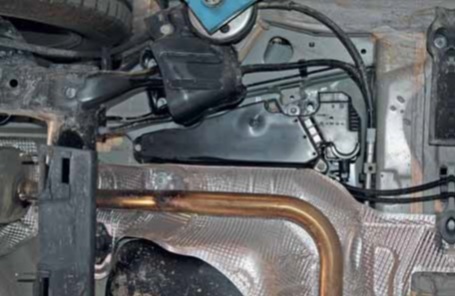 Foto 1 – Sacca Cerina sul veicolo
Foto 1 – Sacca Cerina sul veicolo
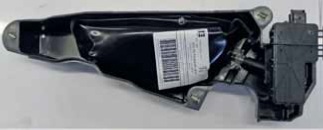 Foto 2 – Sacca cerina
Foto 2 – Sacca cerina
HOW TO ADD THE ADDITIVE
On these engine versions, the additive tank is a bag housed inside a plastic container (see photos 1 and 2). Despite the interventions performed, however, the P1454 error cannot be cleared from the fault memory. The inability to clear the error is due to the fact that, using the diagnostic tool, in the Settings/Programming menu, the cerina consumption parameter must be initialized in the injection control unit based on the vehicle’s mileage. The diagnostic steps are as follows. Since the DPF has been cleaned (or replaced, if necessary) and the particulate filter level has been restored, the first step is to update the ECU for these two operations (see Figure A):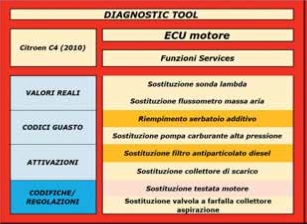 Figura A – Reset lavaggio/sostituzione FAP e riempimento cerina
Once this is done, you can then initialize the particulate filter consumption parameter by navigating to the learning menu (see Figure B):
Figura A – Reset lavaggio/sostituzione FAP e riempimento cerina
Once this is done, you can then initialize the particulate filter consumption parameter by navigating to the learning menu (see Figure B):
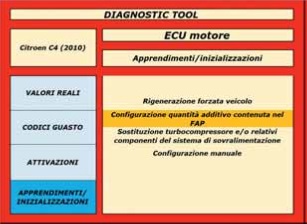 Figura B – Apprendimento quantità cerina nel FAP
This operation involves storing in the ECU an estimated amount of particulate filter accumulated in the particulate filter, consistent with the vehicle’s mileage. The tool will ask you to determine the amount to be added using a predefined table that will then be displayed on the screen, like the one below (see Figure C):
Figura B – Apprendimento quantità cerina nel FAP
This operation involves storing in the ECU an estimated amount of particulate filter accumulated in the particulate filter, consistent with the vehicle’s mileage. The tool will ask you to determine the amount to be added using a predefined table that will then be displayed on the screen, like the one below (see Figure C):
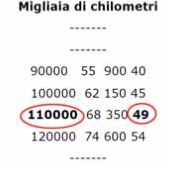 Figura C – Tabella quantità cerina – chilometraggio
The first digit indicates the vehicle’s mileage, while the last digit indicates the amount of particulate filter, expressed in grams, to be added to the ECU. The table shows an example for 110,000 km, with 49 grams of cerine.
Figura C – Tabella quantità cerina – chilometraggio
The first digit indicates the vehicle’s mileage, while the last digit indicates the amount of particulate filter, expressed in grams, to be added to the ECU. The table shows an example for 110,000 km, with 49 grams of cerine.
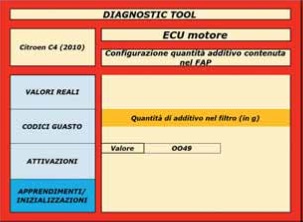 Foto 3 – Inserimento quantità cerina
When entering the value, be careful to write the quantity correctly: if, as in the example, it were 49 grams of cerine, you would enter 0049. After learning, the P1454 code can be erased, thus completing the repair.
Foto 3 – Inserimento quantità cerina
When entering the value, be careful to write the quantity correctly: if, as in the example, it were 49 grams of cerine, you would enter 0049. After learning, the P1454 code can be erased, thus completing the repair.Want to report a correction or request information? Leave your feedback and a comment for our experts!






